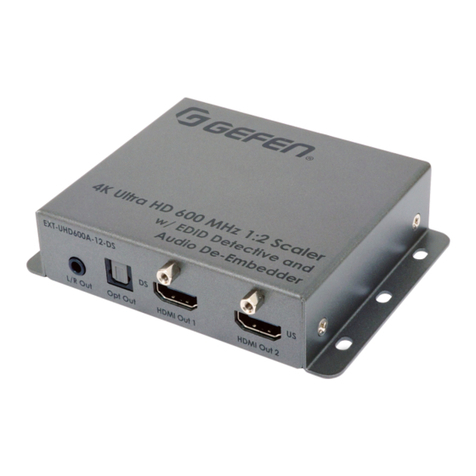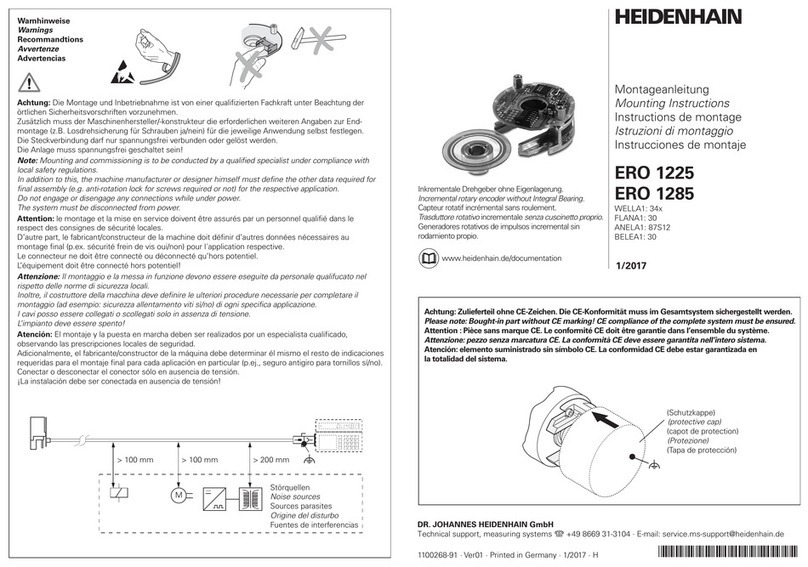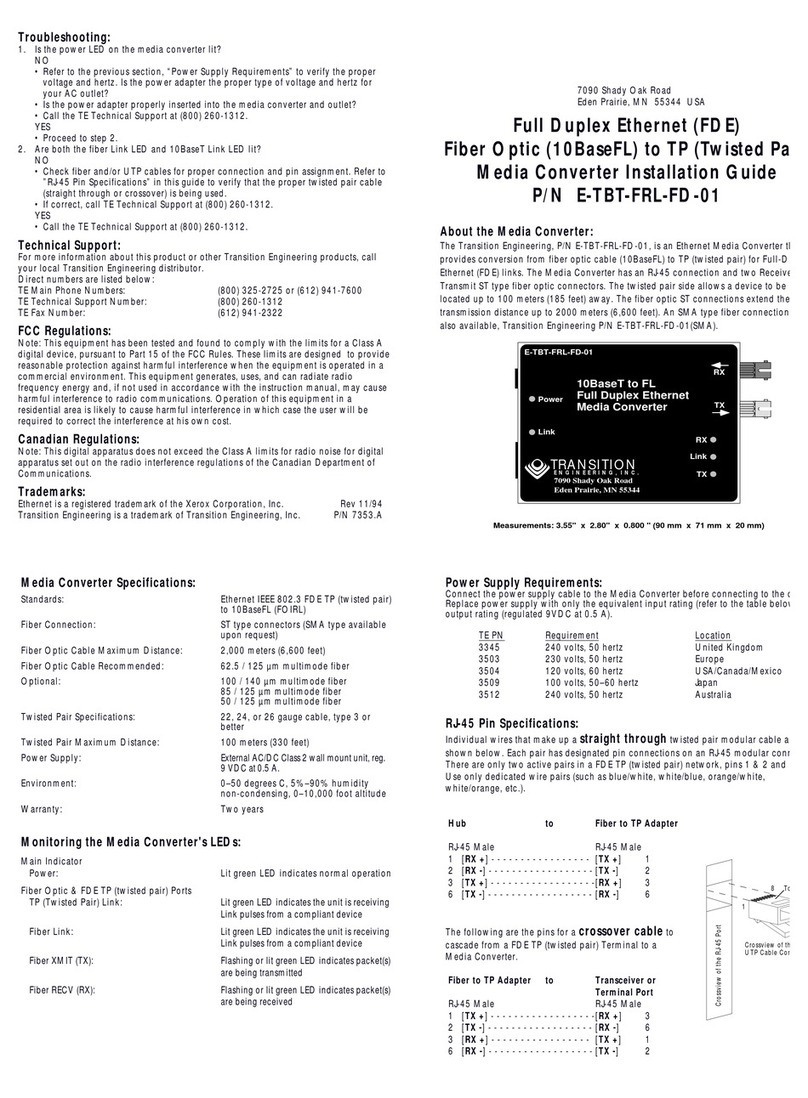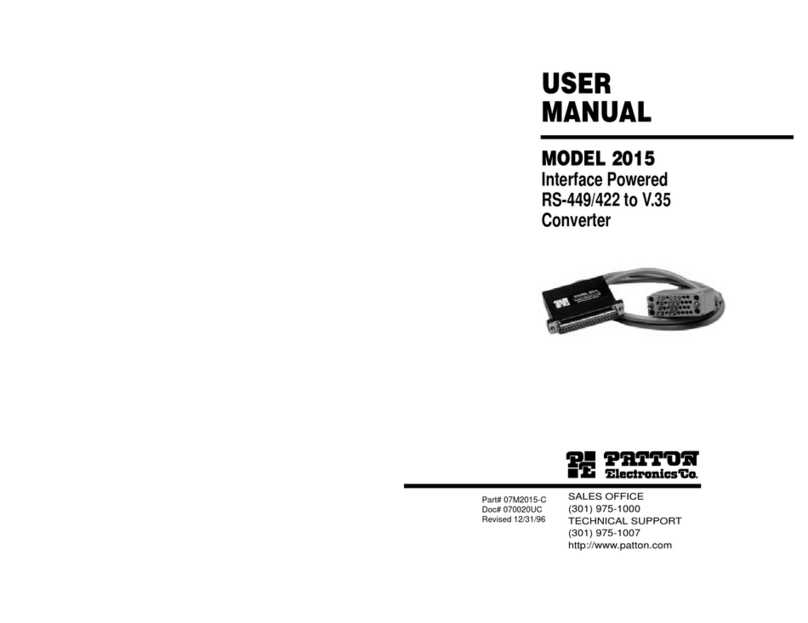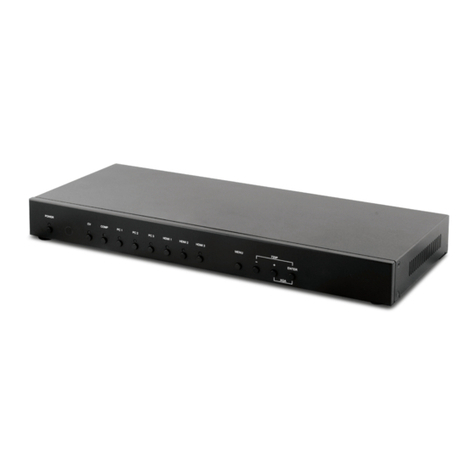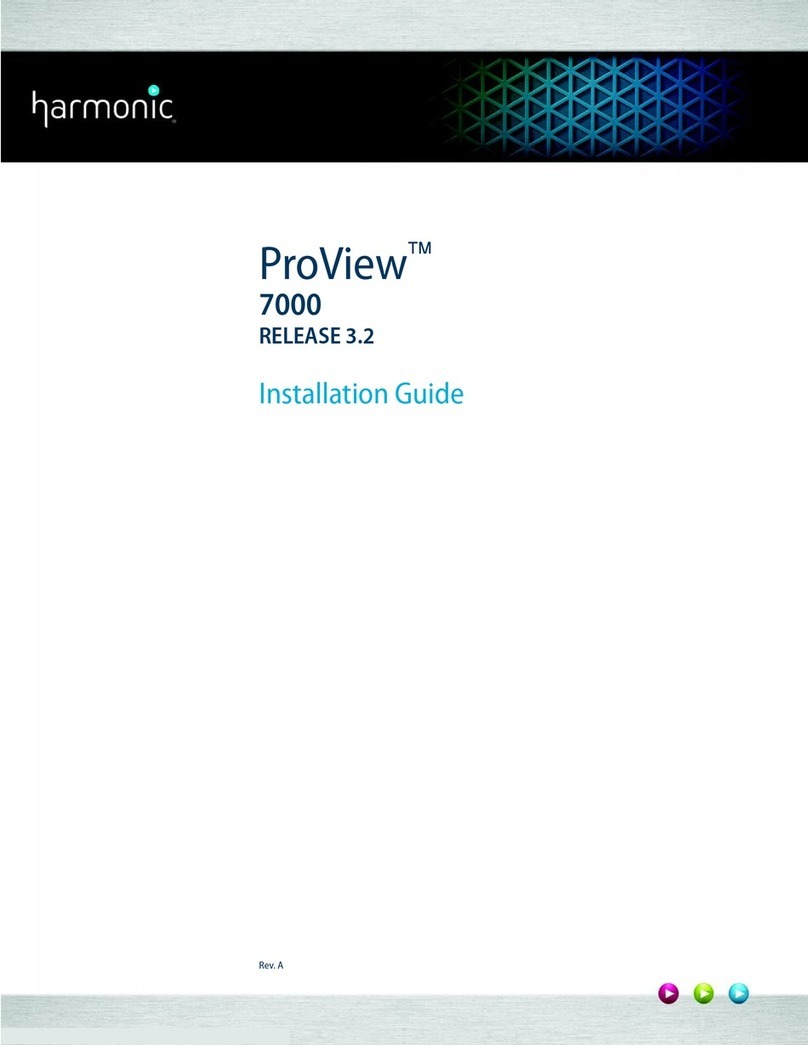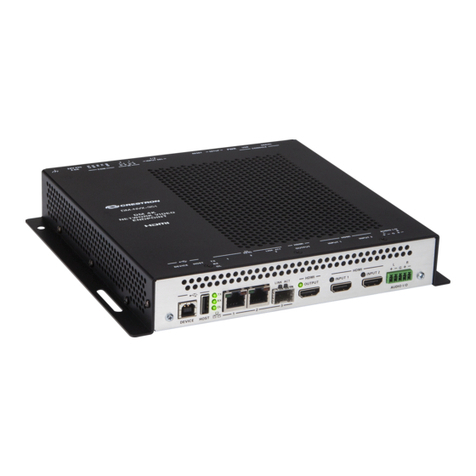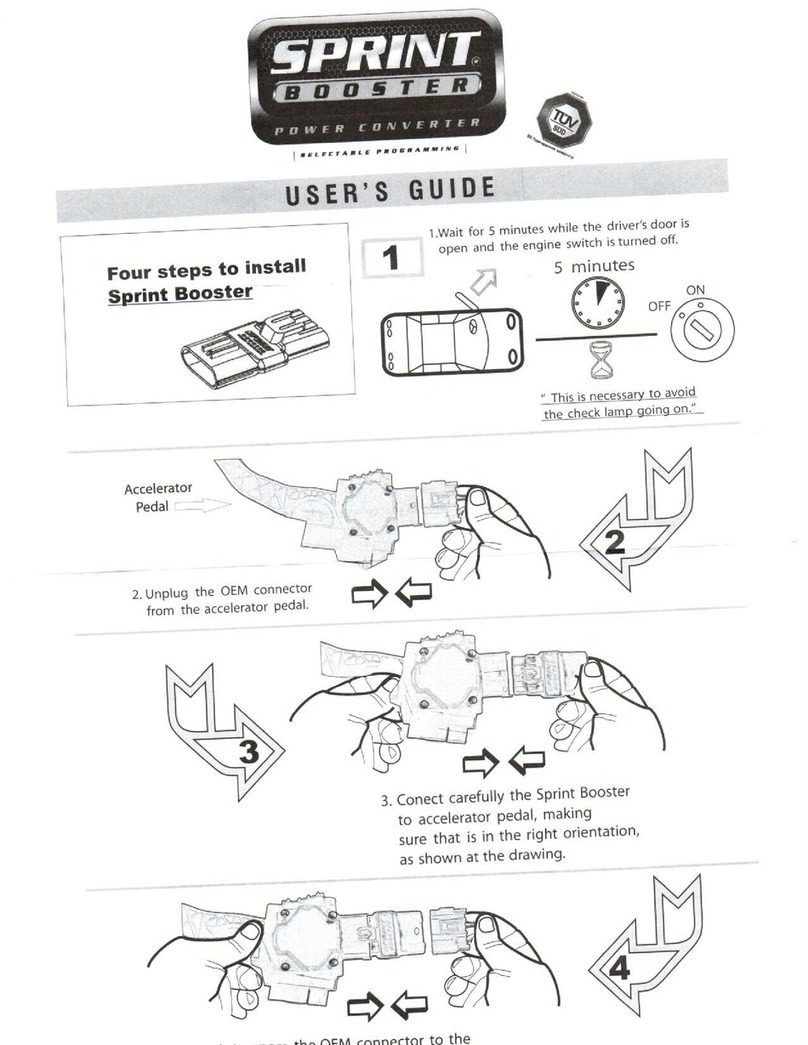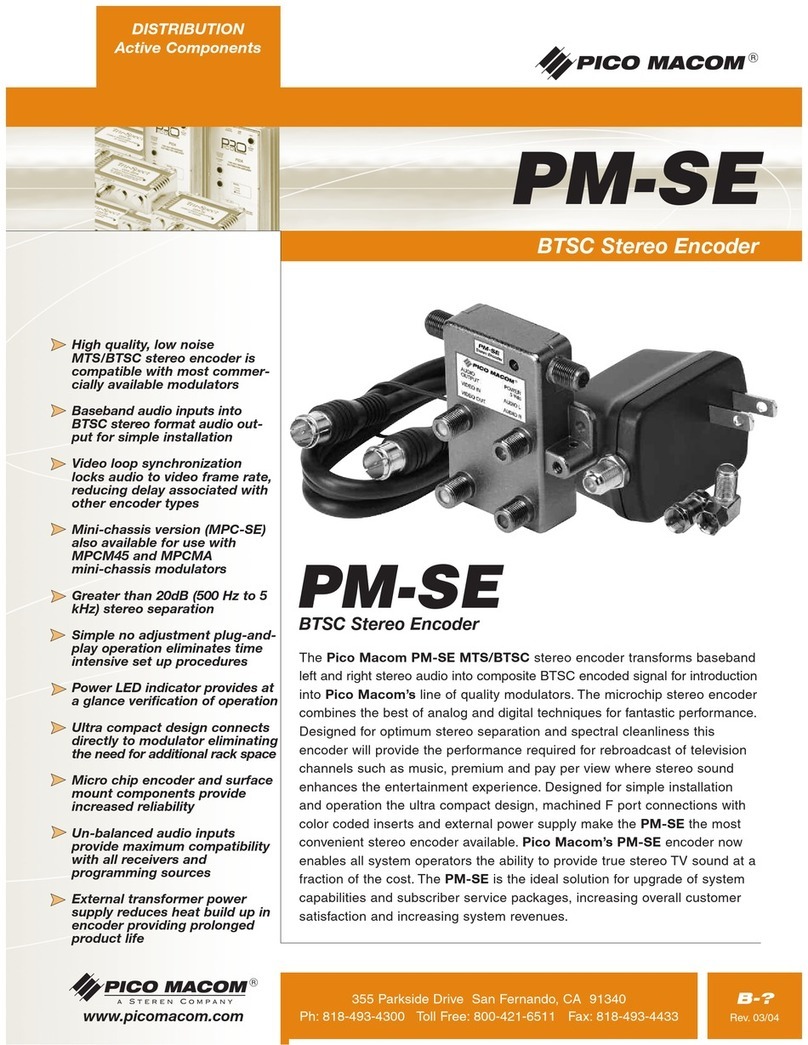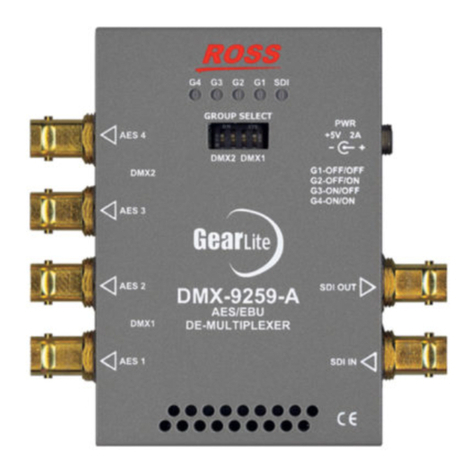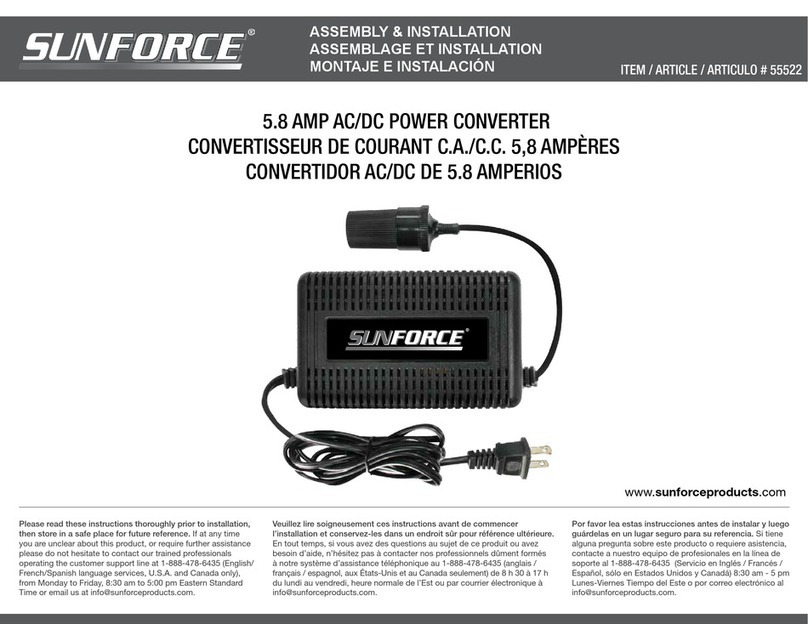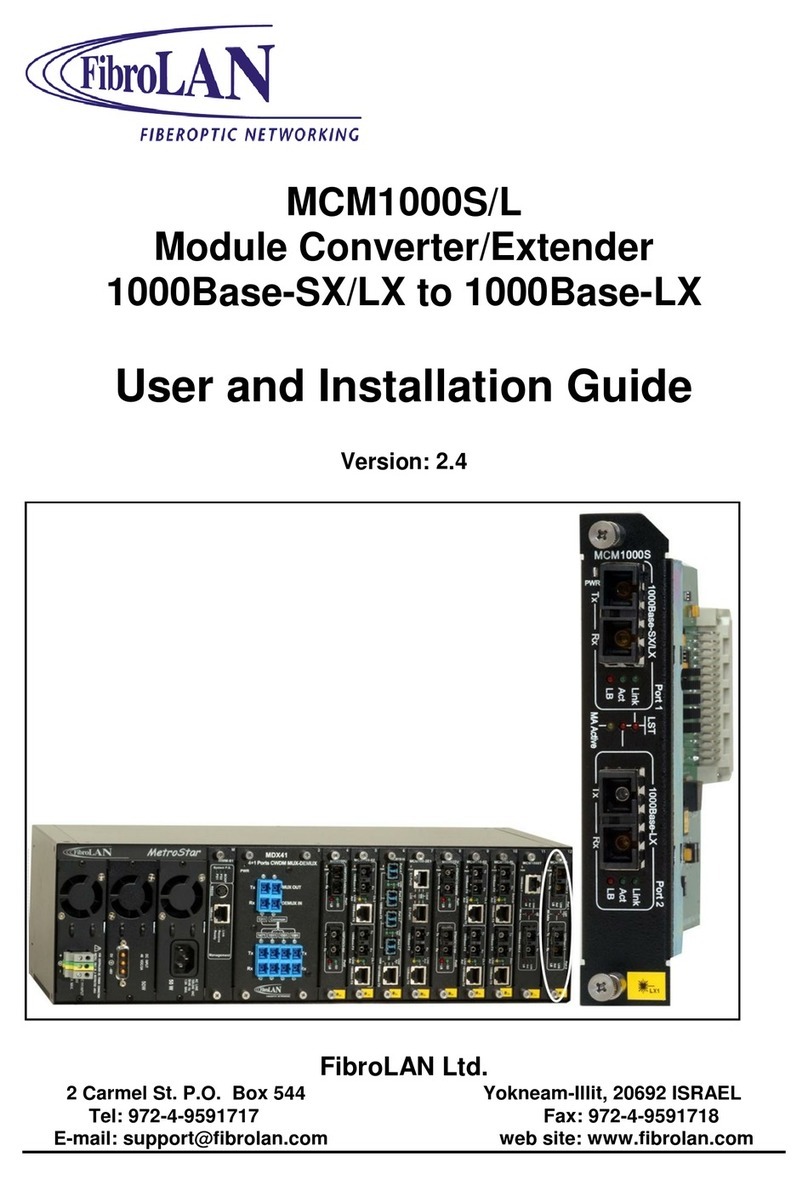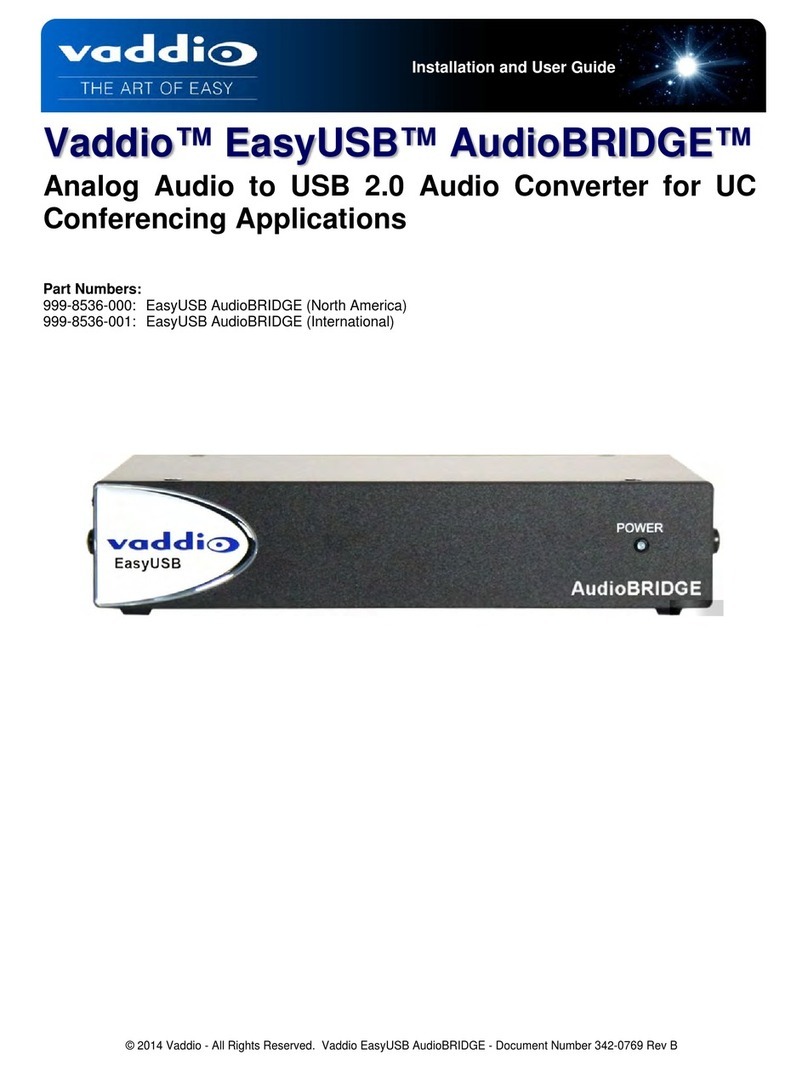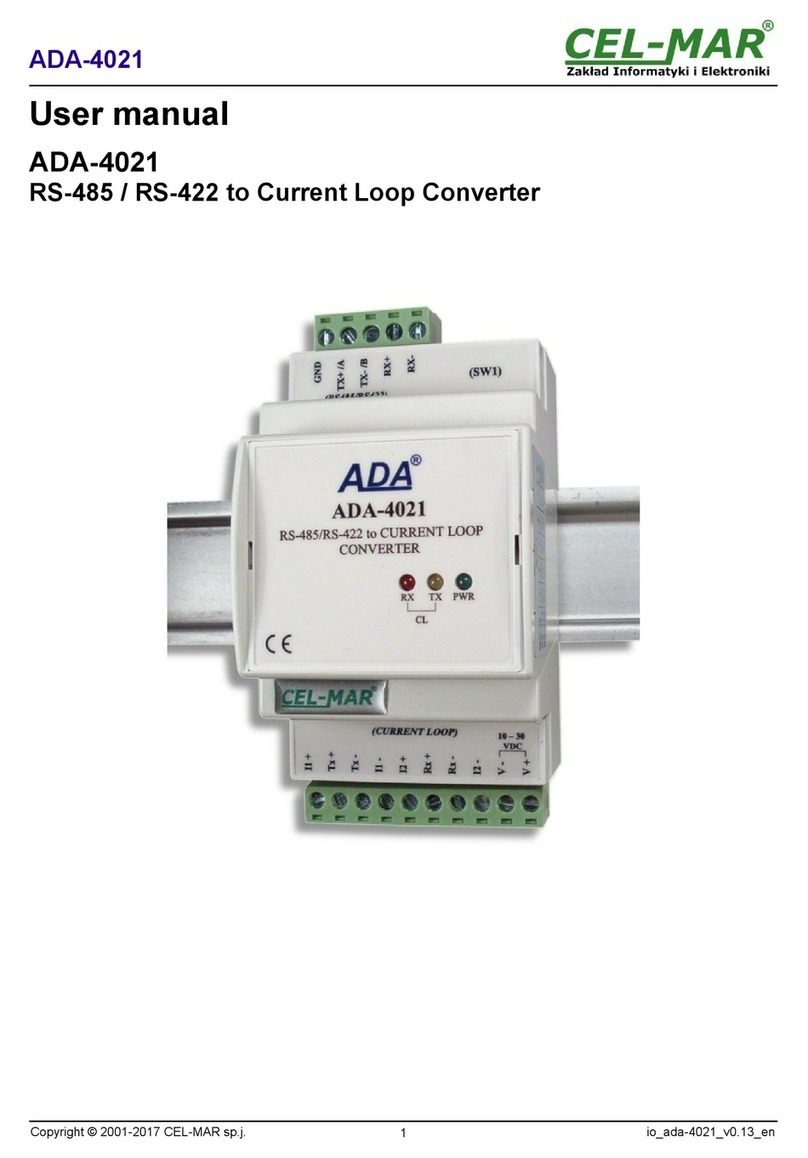R.V.R. Elettronica TRDS 4001 User manual

Manufactured by Italy
TRDS 4001
User Manual

TRDS4001-UserManual
Version 4.0
© Copyright 1993-2001
R.V.R.ElettronicaSpA
Via del Fonditore 2/2c - 40138 - Bologna (Italia)
Telefono: +39 051 6010506
Fax: +39 051 6011104
Email: info@rvr.it
Web: www.rvr.it
Allrightsreserved
PrintedandboundinItaly.Nopartofthismanualmaybereproduced,
memorized or transmitted in any form or by any means, eletronic or
mechanic, including photocopying, recording or by any information
storageand retrieval system, without the permissionof the copyright
owner.

TRDS 4001
i
UserManual Rev. 4.0-23/03/2001
Table of Contents
1. Preliminary instructions 1
2. Warranty 3
3. First Aid 5
3.1 Treatment of electrical shocks 5
3.1.1 If victim is not responsive 5
3.1.2 If victim is responsive 6
3.2 Treatment of electrical Burns 6
3.2.1 Extensive burned and broken skin 6
3.2.2 Less severe burns (1st and 2nd degree) 6
4. General Description 7
4.1 Introduction 7
4.2 RDS System Description 7
4.3 Encoder External Description 9
4.3.1 Front Panel 9
4.3.2 Rear panel 10
4.4 Software 10
4.5 Technical Specifications 11
5. Electrical Description 13
5.1 Introduction 13
5.2 Power Supply 13
5.3 RDS Circuit 13
5.4 Audio Exchanger Circuit (Only For TRDS4001/SAT Version)13
6. Installation Procedures 15
6.1 Introduction 15
6.2 Unpacking 15
6.3 Installation Instructions 15
6.4 Hardware Installation 16
6.5 Software Installation 18
Appendix:
Component layouts, schematics, bills of material

TRDS 4001
ii
UserManualRev.4.0 - 23/03/2001
This page was intentionally left blank

TRDS 4001
1 / 36
User Manual Rev. 4.0-23/03/01
1. Preliminary instructions
This manual is written as a general guide for those having previous knowledge
and experience with this kind of equipment.
It is not intended to contain a complete statement of all safety rules which should
be observed by personnel in using this or other electronic equipment.
The installation, use and maintenance of this piece of equipment involve risks
both for the personnel performing them and for the device itself, that shall be used
only by trained personnel.
R.V.R. doesn’t assume responsibility for injury or damage resulting from improper
procedures or practices by untrained/unqualified personnel in the handling of this
unit.
Please observe all local codes and fire protection standards in the operations of
this unit.
WARNING: alwaysdisconnect power before opening covers or removing anypart
of this unit.
Use appropriate grounding procedures to short out capacitors and high voltage
points before servicing.
WARNING: This is a "CLASS A" equipment. In a residential place this equipment
can cause hash. In this case can be requested to user to take the necessary
measures.
R.V.R. Elettronica SpA reserves the right tomodifythedesign and/or the technical
specifications of the product and this manual without notice.

TRDS 4001
2 / 36
User ManualRev. 4.0-23/03/01
Pagina lasciata intenzionalmente in bianco
This page was intentionally left blank

TRDS 4001
3 / 36
User Manual Rev. 4.0-23/03/01
2. Warranty
Any product of R.V.R. Elettronica is covered by a 12 (twelve) month warranty.
Forcomponentsliketubesforpower amplifiers,theoriginalmanufacturer’swarranty
applies.
R.V.R. extends to the original end-user purchaser all original manufacturers
warranties which are transferable and all claims are to be made directly to R.V.R.
per indicated procedures.
R.V.R.'s warranty shall not include:
1) Re-shipment of the unit to R.V.R. for repair purposes
2) Any unauthorized repair/modification
3) Incidental/consequential damages as a result of any defect
4) Nominal non-incidental defects
5) Re-shipment costs or insurance of the unit or replacement units/parts
Warranty shall come into force from invoice date and for the period of the
manufactures warranty.
Anydamagetothegoodsmust be reported to the carrier in writing on the shipment
receipt.
Any discrepancy or damage discovered subsequent to delivery, shall be reported
to R.V.R. within five (5) days from its receipt.
To claim your rights under this warranty:
a. Contact the dealer or distributor where you purchased the unit. Describe the
problemandaskifhehas aneasy solution.DealersandDistributorsaresupplied
with all the information aboutproblems that may occur and usually they can
repairthe unit quicker thanwhatthemanufacturercould do. Very ofteninstalling
errors are discovered by dealers.
b. If your dealer cannot help you, contact R.V.R. in Bologna and explain the
problem. If it is decided to return the unit to the factory, R.V.R. will mail you a
regularauthorization with all the necessary instructions tosendbackthegoods.
c. When you receive the authorization, you can return the unit. Pack it carefully
for the shipment, preferably using the original packing and seal the package
perfectly. The customer always assumes the risks of loss (i.e., R.V.R. is never
responsible for damage or loss), until the package reaches R.V.R. premises.
For this reason, we suggest you to insure the goods for the whole value.
ShipmentmustbeeffectedC.I.F.(PREPAID)tothe addressspecifiedbyR.V.R.’s
service manager on the authorization.

TRDS 4001
4 / 36
User ManualRev. 4.0-23/03/01
DO NOT RETURN UNITS WITHOUT OUR AUTHORIZATION AS THEY WILL
BE REFUSED.
a Be sure to enclose a written technical report where mention all the problems
found and a copy of your original invoice establishing the starting date of the
warranty.
Replacement and warranty parts may be order from the following address. Be
sure to include the equipment model and serial number as well as part description
and part number.
R.V.R. Elettronica SpA
Via del Fonditore, 2/2c
40138 BOLOGNA
ITALY
Tel. +39 051 6010506

TRDS 4001
5 / 36
User Manual Rev. 4.0-23/03/01
3. First Aid
The personnel employed in the installation, use and maintenance of the device,
shall be familiar with theory and practice of first aid.
3.1 Treatment of electrical shocks
3.1.1 If victim is not responsive
follow the A-B-C's of basic life support
• Place victim flat on his backon a hard surface.
• Open airway: lift up neck, push forehead back
• clear out mouth if necessary and observe for breathing
• if not breathing, begin artificial breathing (Figure 2): tilt head, pinch nostrils,
make airtight seal, four quick full breaths. Remember mouth to mouth
resuscitation must be commenced as soon as possible
Figure 1 Figure 2
• Check carotid pulse (Figura 3); if pulse is absent, begin artificial circulation
(Figura 4) depressing sternum 1 1/2" TO 2" (Figure 5).
Figura 3 Figura 4 Figura 5
• APPROX. 80 SEC. : ONE RESCUER, 15 COMPRESSIONS
• APPROX. 60 SEC.: TWO RESCUERS, 5 COMPRESSIONS, 1 BREATH
• DO NOT INTERRUPT RHYTHM OF COMPRESSIONS WHEN SECOND
PERSON IS GIVING BREATH
• Call for medical assistance as soon as possible.

TRDS 4001
6 / 36
User ManualRev. 4.0-23/03/01
3.1.2 If victim is responsive
•Keep them warm
•Keep them as quiet as possible
•Loosen their clothing (a reclining position is recommended)
•Call for medical help as soon as possible
3.2 Treatment of electrical Burns
3.2.1 Extensive burned and broken skin
• Cover area with clean sheet or cloth (Cleansed available cloth article).
•Do not break blisters, remove tissue, remove adhered particles of clothing,or
apply any salve or ointment.
•Treat victim for shock as required.
• Arrange transportation to a hospital as quickly as possible.
•If arms or legs are affected keep them elevated
If medical help will not be available within an hour and the victim is conscious and
not vomiting, give him a weak solution of salt and soda: 1 level teaspoonful of salt
and 1/2 level teaspoonful of baking soda to each quart of water (neither hot or
cold). Allow victim to sip slowly about 4 ounces (half a glass) over a period of 15
minutes. Discontinue fluid if vomiting occurs
Do not give alcohol
3.2.2 Less severe burns (1st and 2nd degree)
• Apply cool (not ice cold) compresses using the cleansed available cloth article.
•Do not break blisters, remove tissue, remove adhered particles of clothing, or
apply salve or ointment.
•Apply clean dry dressing if necessary.
•Treat victim for shock as required.
•Arrange transportation to a hospital as quickly as possible
•If arms or legs are affected keep them elevated.

TRDS 4001
7 / 36
User Manual Rev. 4.0-23/03/01
4. General Description
4.1 Introduction
The necessity to immediately know the working parameters of several device in a
system or to transmit with all the several units which have to manage a firm, is a
more and more greater need in all circles.
Thecordless broadcasting ,foritssimple installation and itsgreatpliability,appears
as the more suitable solution in many circles.
In the broadcasting field too, the need to transmit not only the radio signals, but
alsodata packageofdifferentkinds,is alreadystronglyfelt formanyyears, because
it allows to better the quality and the reliability of the available services and at the
end to implement the new ones.
This necessity is also felt in the international field, so much that a proper research
team has constituted itself to identify the different necessities and to determine a
broadcasting standard which would appear more proper for the sector.
Theteam has reached the "RADIO-DATA-SYSTEM(RDS)",whichappears todays
the data broadcasting system more used in the radio field.
The TRDS4001 system allows to transmit, with the radio signal (mono or stereo),
a data channel as specified in the paper "Specification of the radio data system
(RDS)", which is issued by the European Committee for Electrotechnical
Standardization (CENELEC) Ref. N° EN 50067.
4.2 RDS System Description
TheRADIO-DATA-SYSTEMis proper forthetransmissionof informationinmono/
stereo programs of VHF/MF (87.5-108 Mhz).
It satisfies the requested requirements to the transmission of supplementary data
on radio programs:
1) Compatibility with the current mono/stereo transmissions;
2) Absence of interferences towards the adjacent programs;
3) Compatibility with other identification systems which are already working.
The system, selected by an international specialistic team, allows the data
transmission at a speed of 1187.5 bit/sec with phase modulation at two levels ,
carrier wave 57 Mhz and range ±2 Khz.
The broadcasted binary signal is in advance put out on a differential codification.

TRDS 4001
8 / 36
User ManualRev. 4.0-23/03/01
The registry of transmission is at packages of lenght 104 bits (87.6 ms) named
GROUPS, each of them composed of 4 blocks of 26 bits.
Everyblock is composed of 16 bits ofinformationandof10bits of protection, which
areproperlystudiedto allowtherecoveryofan erroneouswordwithamaximum of5
wrongbits.
They are provided with 16 separete blocks of which 6 are still not defined; every
group begins with a PI identification code (Program Identification) which has the
doubleintent tosynchronizethe receiverandtoidentify thechannelwhich transmits
thesignal.
Thepourposeofthe encoderTRDS4001 istomanagetheprincipal servicesdefined
bythe standard CENELEC EN 50067as:PI,PS, PTY, TP, AF,TA, DI,M/S,PIN,RT,
EON,TDC, IH,CT.
As follows, we’ll mention a short description about the function of each of these
services.
PI - PROGRAM IDENTIFICATION: it’sthe identification code of the radio. Its more
importantapplication is to allow the receiver,incaseofbad reception, to implement
the "Automatic Frequency Change"; this happens when there is a signal with the
samePI andofbetterlevel thanthesyntonized one.
PS - PROGRAM SERVICE: it’s the visualized text on the receiver display, which
has to be of maximum 8 characters, as this is the standard dimension of receivers
displays.The TRDS4001 characteristic istostoreup to 8 messagesandthetime of
transmissionof each ofthem.Everymessage can be composedfrom1to 16 words
of 8 characters, and it’s possible to select the permanence time on the display of
eachof the 16 separate words.
PTY - PROGRAM TYPE:it’sthe identification of the "ProgramType"whichison air
(exampleNews,Sport,Rock, etc.)It’susedtoqualify onthereceivertheautomatical
researchoftheprogramtypedesired.
TP - TRAFFIC PROGRAM IDENTIFICATION: this service indicates with a signal
on the receiver display that the program we’re receiving includes traffic news.
AF - ALTERNATIVE FREQUENCIES: it’s the frequencies list of different
transmitters which transmit the same program in the adjacent receiving areas.
The list is memorized by the receiver and used to reduce the commutation time
beetwen the different transmitters of the same program.
TA - TRAFFIC-ANNOUNCEMENT IDENTIFICATION: it’ used to indicate to the
car-driver that the traffic news are on air. The receiver could use the signal in one
of the following modes:
a) To switch automaticallyfromtheTape (or fromtheCompactDisk) to the radio;
b) To automatically switchontheradio when the trafficnewsbegin;

TRDS 4001
9 / 36
User Manual Rev. 4.0-23/03/01
c) Toautomatically changeoverfromastationwhichdoesn’ttransmittrafficnews;
M/S - MUSIC/SPEECH SWITCH: it’s used to modify the music and the spoken
volume one by one.
PIN - PROGRAM- ITEM NUMBER:it’sused to planthe receiver to receivecertain
programs at preselected date and hour.
RT - RADIOTEXT: it’s used to transmit the text trasmission; this function is mainly
for the domestic application (house receivers).
EON - ENHANCED OTHER NETWORKS: it’s used to transmit the PI,PS,AF,PTY
to the PIN of other radios.
TDC - TRANSPARENTE DATA CHANNEL: it’s used for the data transmission
and it could be free used, for example, to send messages on a brighltly sign.
IH - IN HOUSE APPLICATION: it’s used to transmit data of exclusive use of the
broadcaster and it can be utilized , for example, to send telemetry data, software,
etc.
4.3 Encoder External Description
The coder TRDS4001 is composed of a 19", 1HE and 250 mm depth rack.
4.3.1 Front Panel
12
3
4
5
6
7
8
9
10 11
1 LEDS 7 green leds indicating some functions of the RDS encoder (for future
use)
2 KEYON
Led indicating that one of the keys is pressed
3 TP Switchandledtoinsert/removeandseethestatusoftheTPbit
4 TA Switchandledto insert/remove and see the status of the TAbit
5 M/S Switchand led to insert/remove and see the status of the M/S bit
6 F1 Switchandled toinsert/removeandseethe statusoftheF1bit (reserved
forfutureuse)
7 F2 Switchandled toinsert/removeandseethe statusoftheF2bit (reserved
forfutureuse)
8 STE green LED, when lit it indicates the detection of the 19 kHz tone in the
MPXinput

TRDS 4001
10 / 36
User ManualRev. 4.0-23/03/01
9 RDS OK
greenLED,whenlit it indicates the correct generation of the RDS
signal
10 LOCK green LED,whenlititindicates that the encoder is locked on the
suppliedpilottone
11 ON mainsswitch
4.3.2 Rear panel
1 2345678910 1112
1 Mains Mainsplugand valtage changer
2 Vdc 24 V dc in
3 Mono MonoXLRinput
4 Dip SwSwitchtoselectexternalsynchronization(19kHzin)orinternal (MPX in
orinternal oscillator for mono in)
5 19kHz Pilot tone input
6 SAT optionalauxiliary input
7 MPXINBNC connector for MPX input
8 MPXOUT
BNCconnector for MPX+RDS output
9 RDS BNCconnectorfor RDS output
10 RDS DB9connectorforRDSdata(notimplemented)
11 TELEMETRY
DB25connector forauxiliaryI/O
12 RS232 DB9connectorfor serial programming of the encoder
4.4 Software
The software in kit in italian and english language, on a DOS disk supplied, allows
actually to set eight different RDS messages, each of 16 words and a maximum of
25alternativefrequencies;everymessageautomatically startsat thehouroftheday
specificatelypreselectedfromtheuser.Moreover,itallowstomanagealltheservices,
whicharelistedintheforegoingsection.
AlltheENCODERmanagementapplicationsareconfigurablewith aIBM-compatible
personalcomputer,whichhastobeconnected withaserialcabletotheencoder.
Afterhavingconfigured the encoder,the PC can be disconnected.

TRDS 4001
11 / 36
User Manual Rev. 4.0-23/03/01
4.5 Technical Specifications
Electrical Specifications
RDSSignal as in CENELEC EN 50067 specs
Codification Differentialattwolevels
Modulation DSBwithsuppressed carrier
Frequency 57 Khz
Range ±2.4 Khz
MPX INPUT 0/+12 dBm on 600 Ohm
OUTPUT MPX + RDS
MPXoutputlevel InpMPX
RDSoutput level 20-1000mVpp
Outputimpedance 100 Ohm
RDS usermessages 16 words of 8 characters, whose 2 with data
and transmission time
Alternativefrequencies 25
Messagechange with IMB-compatiblePC
CONNECTION RS232-Cstandard
COMUNICATION FullDuplex
RAPIDITY 1200baud
RS232-CCONNECTOR 9 Pin CannonFemale
MESSAGE MANAGEMENT checked with a microchecker
DATA PRESERVATION 1O years (inabsenceof powersupply)
A.C. SUPPLY 100-130V, 50-60Hz
198-250V, 50-60Hz
D.C. SUPPLY 24V
POWERCONSUMPTION 15 VA
Physical Specifications
RACKDIMENSIONS 44.0mm (1.7") H
360.0mm(14.15")W
245.0mm(9.7")D
PANELDIMENSIONS 483.0mm(19")W
44.0mm(1.7")H
OPERATINGTEMPERATURE - 10°Cto50°C
HUMIDITY 90%max,non condensing
WEIGHT 3.5 Kg

TRDS 4001
12 / 36
User ManualRev. 4.0-23/03/01
This page was intentionally left blank

TRDS 4001
13 / 36
User Manual Rev. 4.0-23/03/01
5. Electrical Description
5.1 Introduction
Thischapter describestheTRDS4001ENCODER function. Forutility,thedevice is
dividedin subassemblieswhichwill be deeplydiscussedin thefollowingparagraph.
5.2 Power Supply
The power supply section is composed from a 220 V transformer (double primary
110-110 V) which supplies a +12 V voltage for the analogical part and a +5 V
voltage for the digital logical one. In 24 V version (actually current model), in case
of range absence, the apparate automatical commutes the power supply on the
external battery, on guaranting the continuity of service.
5.3 RDS Circuit
It presents a microchecker which manages the production of RDS message. The
setted RDS message is preserved also in absence of primary power supply. The
RDS carrier wave at 57 Khz is produced on locking at the 19 Khz one of MPX
signal in input for the stereo transmission systems, or with an internal quartz
oscillator for the mono transmission systems. In the stereo systems the stereo led
lights. The into codifier microchecker could immediately modifythe transmitted
message;thatguaranteesthesystemverymuchfexibleandadattableatthedifferent
custumersnecessities.
5.4 Audio Exchanger Circuit (Only For TRDS4001/SAT Version)
Thiscircuit,whichispresentonlyinsatversion,hasthefunction,afterpointingoutthe
audio signal absence which comes from the earth connection, to change over the
apparateonthesignwhichcomesfrom the sat.
Thecommutationtimeischangeablefrom20to45secondsanditcould beregulated
betweenthe R6trimmer.
Wecould have the audio signalthresholdlevelregulationonsetting the R9 trimmer
on the circuit.

TRDS 4001
14 / 36
User ManualRev. 4.0-23/03/01
This page was intentionally left blank

TRDS 4001
15 / 36
User Manual Rev. 4.0-23/03/01
6. Installation Procedures
6.1 Introduction
This chapter contains the useful information for the TRDS4001 installation and
preliminary check-in.
TheR.V.R.ELETTRONICA S.p.A. suppliesthefollowing equipment:
1. N. 1 19" 1U rack, which contains the TRDS4001 RDS codifier;
2. N. 1 VDE cable for the A.C. supply of the system;
3. N. 1 3.5" DOS disk with relative software;
4. N. 1 Reverse DB9 serial connection cable, male and female;
5. Manual.
Incaseofthepersonal computer is not equipped of a DB9 type serial gate, butofa
DB25typeone,thecable has to be realized as showed in the following screen:
6.2 Unpacking
Unpack the equipment and, before any other operation, check the unity for any
shipping damage and check that all controls placed on the front and the rear panel
are useable.
6.3 Installation Instructions
For the installation and the use of the system are necessary the following not
supplied accessories:
1. Cablesforthe mono and stereo signals entrance to the TRDS4001 (BNC
side TRDS4001);
2. Cablesfortheconnection between codifier and transmitter (BNC side
TRDS4001);

TRDS 4001
16 / 36
User ManualRev. 4.0-23/03/01
For a right TRDS4001 codifier working, it’s important to observe with attention as
follows:
1) TheTRDS4001coderhastobeinstalledimmediatelybeforethetransmitter,
eitherforstereotransmissions or the mono ones.
2) Theconnectionshastobe realized with most possibleshortscreenedcables.
Werecommendcables not longer than 3 meters.
3) Realizewith caretheinputandoutput connections in order to reducedrones
andbackgroundnoises.
4) Placethecodifierfarfromheatsourcesandinnotdirectelysunradiationsfacing
areas.
5) Checkthattherangevoltagewhichwill supply the system is as desired.
6) RealizeasuppliedDOS disk copybeforeusing.For that it’senoughtouse the
DOS"COPY"command.
7) Donotopentherackcontaining the system.
8) Cleanthesystemonlywithadryand soft cloth in order to avoid finishings
damages.
9) Incaseofdamages,switchoff the system and contact directelythe
firmR.V.R.ELETTRONICAs.p.a.
6.4 Hardware Installation
TheTRDS4001 RDS encodercanbe connected toanexciterbasically intwoways:
•it can add the RDS signal to a MPX input signal and then supply the resulting
basebandsignaltoan exciter accepting MPX input or,
•it can just generate the RDS signal synchronized with an external 19 kHz pilot
tone
The following figure gives a schematic example of the two ways of installing the
encoder.
Table of contents
Other R.V.R. Elettronica Media Converter manuals

R.V.R. Elettronica
R.V.R. Elettronica PTX-DDS User manual
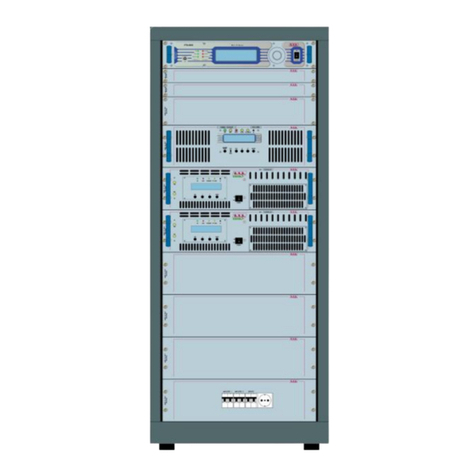
R.V.R. Elettronica
R.V.R. Elettronica TX05KSS/61D082B User manual
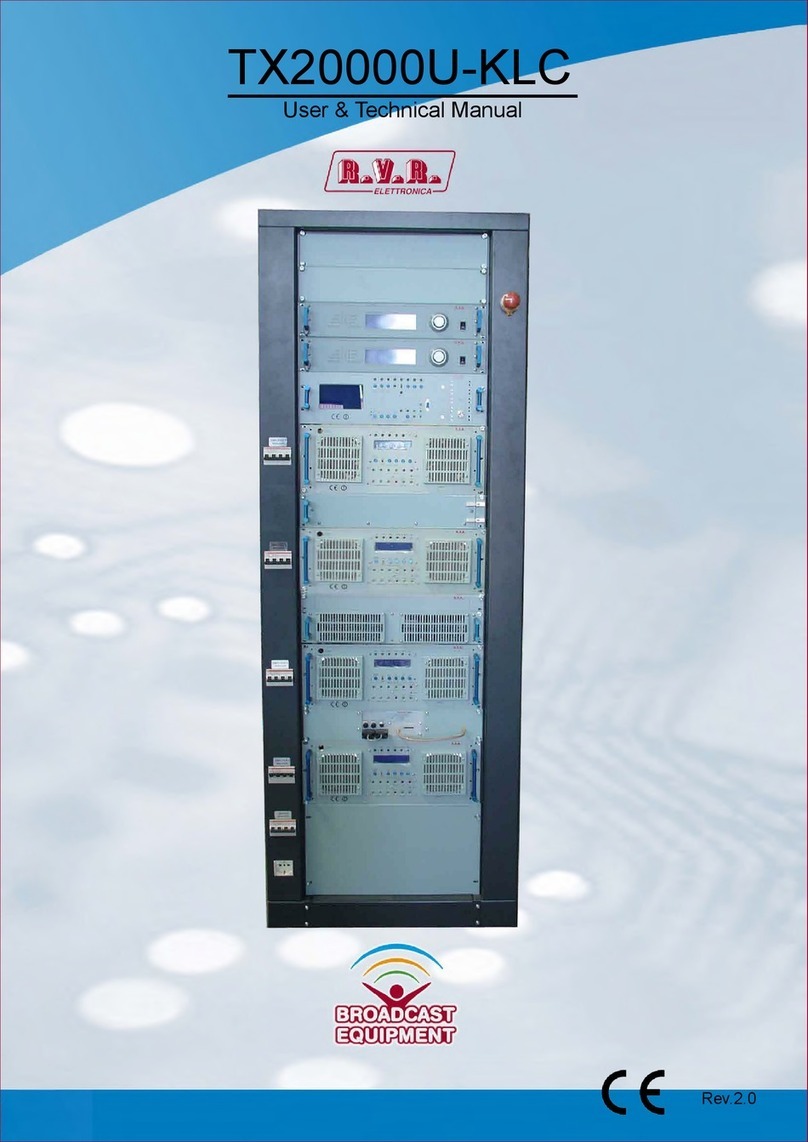
R.V.R. Elettronica
R.V.R. Elettronica TX20000U-KLC User manual
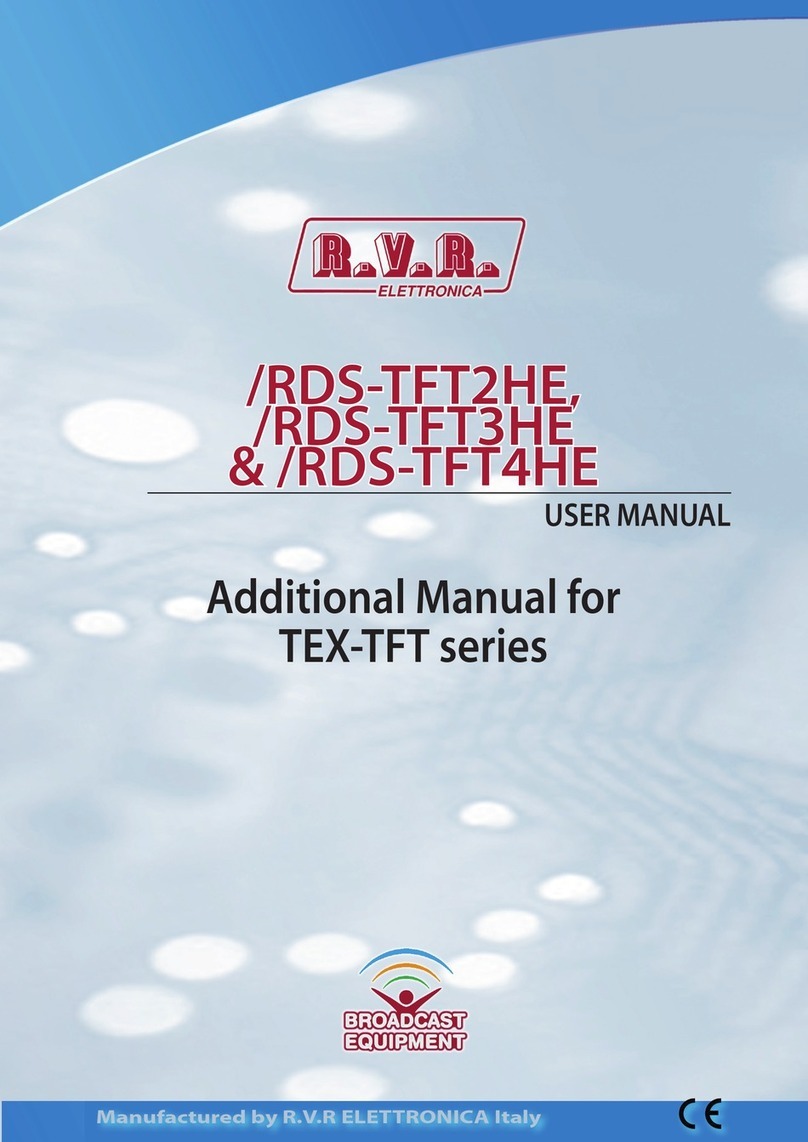
R.V.R. Elettronica
R.V.R. Elettronica TEX-TFT Series User manual

R.V.R. Elettronica
R.V.R. Elettronica TRDS4002 User manual
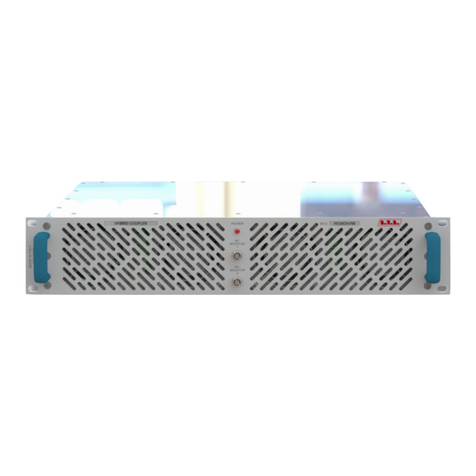
R.V.R. Elettronica
R.V.R. Elettronica HC04CH-FM User manual

